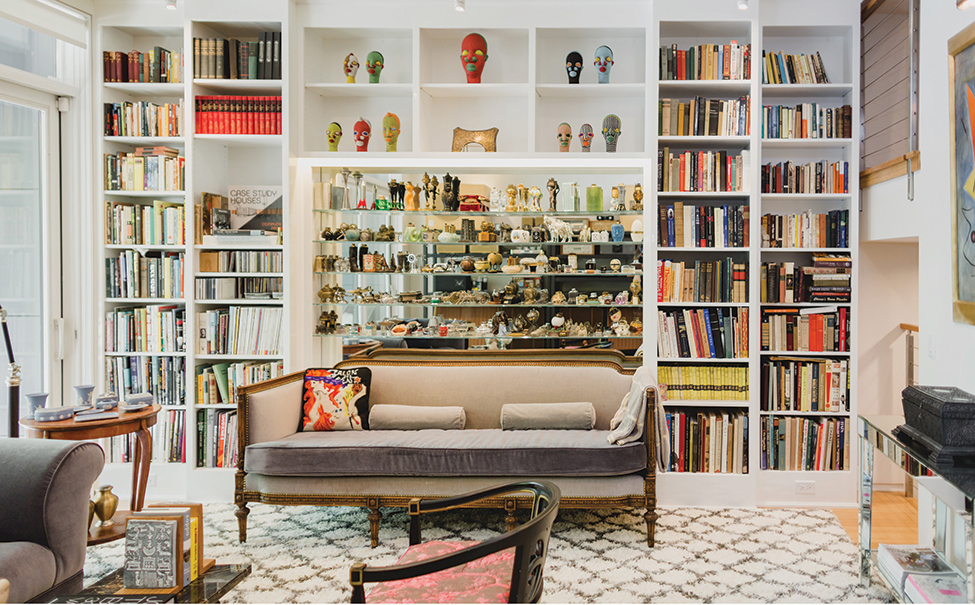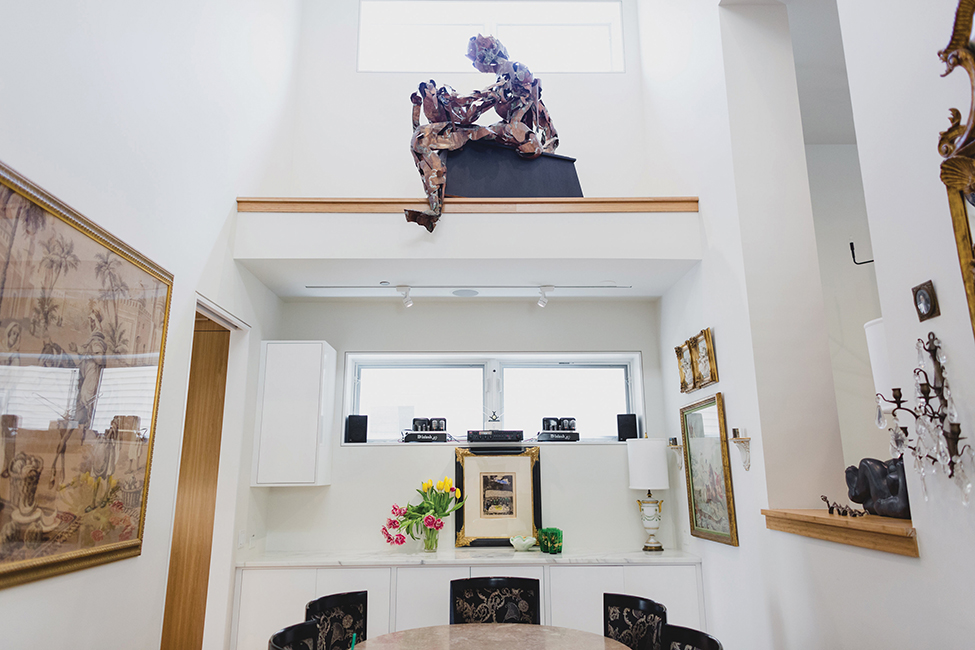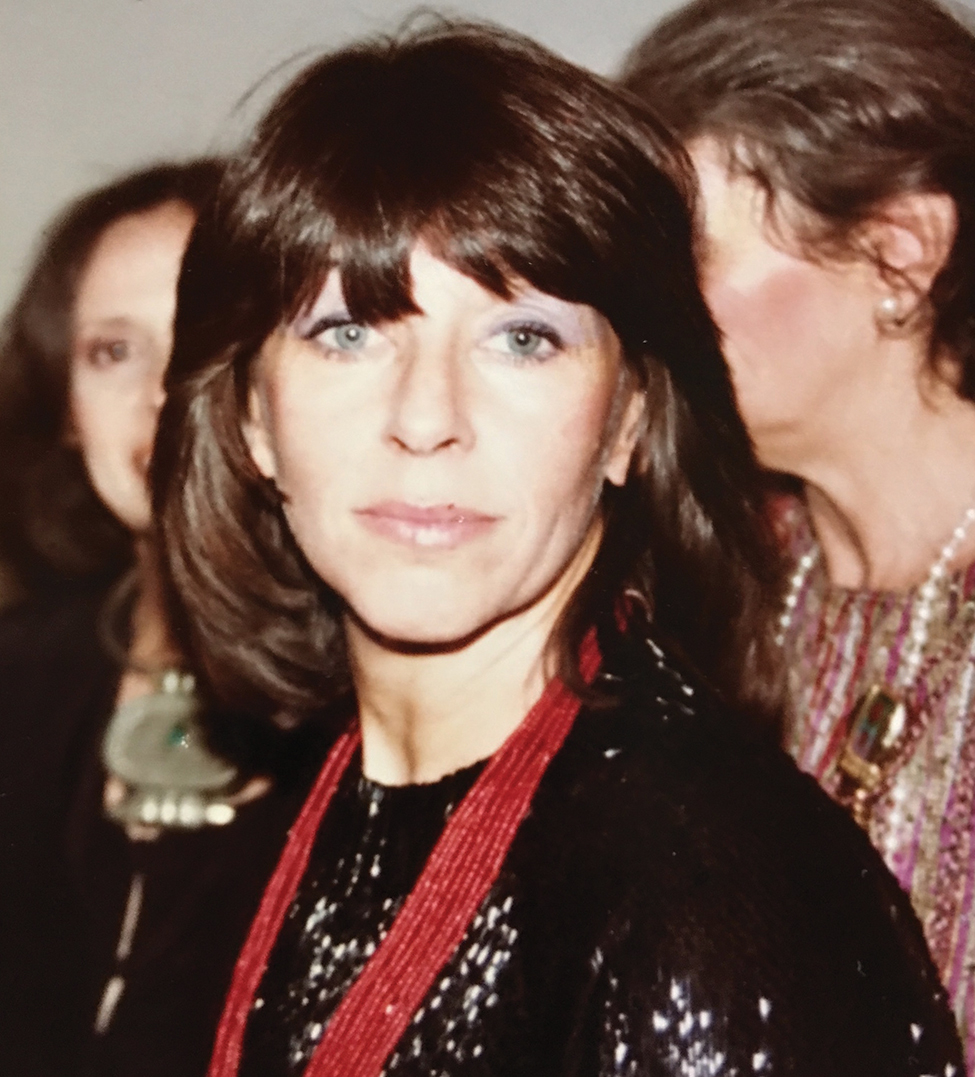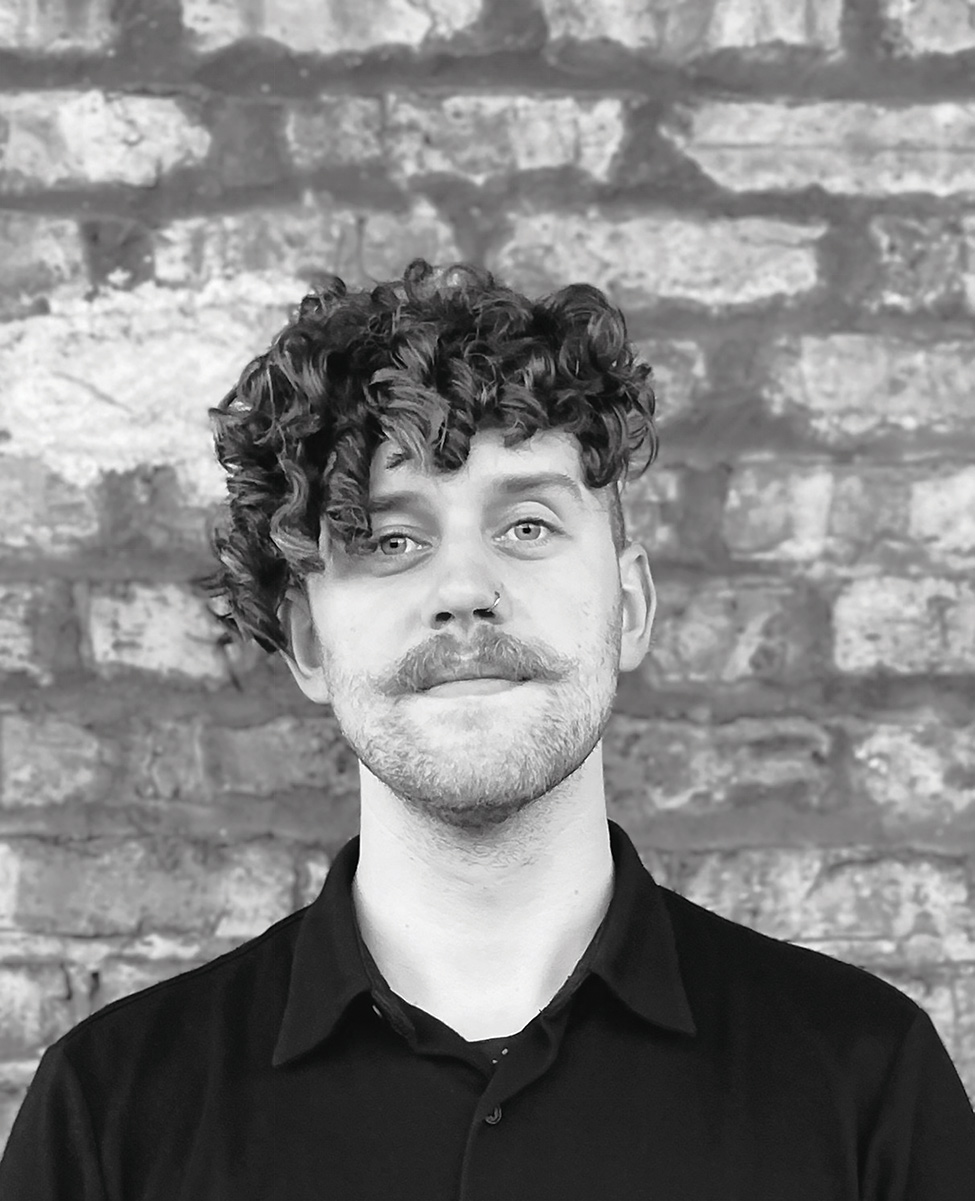In Search of the Eclectic


By GINNY VAN ALYEA
Sally Schwartz says she has always been a hoarder. As a child she was always saving various objects, and she’s continued to hold onto many of those things even today, from an old record case and all of her 45 records, to Winnie-the-Pooh’s Piglet and a resultant collection of pigs. If Sally is drawn to something, she will hunt for many more examples of it. Her passion for seeking just the right vintage needle in a cluttered haystack has led her to become queen of Chicago’s vintage market scene, having founded the Randolph Street Market Festival in 2004.
“I used to go antiquing as a kid,” Sally recalls. Whenever her mom and her friends would head into the city from the North Shore, she would tag along so she could check out the antiques stores in Boystown. Recalling the unusual pieces she found there, she says, “They had really cool, funky style. I’ve always loved the stuff – I like looking at it. It makes me happy.”

Sally’s taste in art and vintage clothing is much the same as what she looks for in antiques. She explains, “I’ve always loved art, and my taste is just all over the place. I like some of the really formal things, and then I like really wild stuff.” She seems to greatly appreciate so many things, from old vases to antique sconces, just for what they mean to her, rather than considering whether or not they have potential to be a monetary diamond in the rough.
She loved vintage clothing so much, even as a kid when no one else was wearing it, she says she didn’t care if she ever wore it – she just loved to have it. That same appreciation and enjoyment is a large part of the fun for her today.
Sally has long specialized in festive gatherings, and it was through event planning that she would get her start organizing markets. She began doing very elaborate theme parties while also working as a decorator. Sally explains, “If I was doing a ‘50s party, I would go find the grill of a 1957 Chevy, or I’d find a jukebox. If it was a jazz party I would find all this Art Deco stuff. I’d have these really big budgets to put together these parties, but I had to start buying and keeping the decorations, since they could be hard to find – there was no market in the city of Chicago to source these types of authentic props.”
Sally saw an opportunity not just for herself but for others hunting for eclectic pieces, too. In the mid ‘90s she organized three big markets with her then-husband, but then, Sally recalls, “I lost the site, and then my marriage ended, and everything sort of fell apart.” Around 2002 she was recruited to take over the Taste of Randolph, but that was not the type of event she wanted to do. Instead, she pitched the idea of an antique market. At the time, she says, there was nothing happening in the West Loop. “It was pretty much dead,” she recalls. “On Randolph Street it was just HARPO, Ina [Pinkney’s diner], Michael Jordan’s One Sixtyblue, and Jerry Kleiner’s restaurants.”
Her first market, in 2004, was outside on the street, and the next one was in Hoops the Gym, a basketball space where Jordan and former Bulls teammate Scottie Pippen practiced before they retired.

Since then Sally has expanded from one-day sales six times a year, to indoor and outdoor markets the last weekend of each month. The Randolph Street Market is internationally known as a go-to source for finding vintage and antique furniture, jewelry, clothing and art. Over 300 vendors take part, and the people who show are an eccentric bunch. The markets have become popular because visitors can find anything from vintage handbags and china to sterling silver candlesticks and high-end rugs. Special themes and on-site events introduced throughout the year make it an unusual experience every time.
Sally’s professional life seems to have evolved to perfectly embody who she is personally, while offering her an endless source for finding treasures. While the pace of running the monthly markets is frenetic, she has her own life, away from Randolph Street, in a serene yet glamorous contemporary house in Lakeview, with her husband, Reid Brody.
Sally likes to joke that Reid sent away for a mail order bride. The reality is that the couple met in Chicago 14 years ago. Friends had insisted they knew someone who was perfect for her. After getting his name wrong for a while – she thought she was looking for Reid Brophy – Sally finally tracked him down through another friend’s boss. They went on a date, and that was it.
The couple got married this past December, after years of living apart in order to raise their own children. Their marriage aligned with their decision to move into a new home together, where they have combined their tastes as well as their belongings and collections. Sally came from a vintage Hyde Park home with art everywhere, while Reid was living in what Sally called a frat house/man cave in Wrigleyville. In their Lakeview house they wanted to display their pieces with more air and a much less cluttered feeling. Reid admits, “The good thing about moving was getting a ton of stuff out.” To Sally, “When we moved in here, we wanted things quiet and spaced. We have a lot of art that we have gotten rid of, and there are pieces that we don’t hang, because putting too much in this space wouldn’t look right.”
The home’s open spaces are filled with blonde wood floors, and big windows that let in generous light. Each room is sleek and bright. Even though Sally says they tried not to have too much in the space, there is still something to look at on every wall and around every corner. Many of the pieces and objects have personal stories associated with them: a pair of imposing needlepointed chairs in the dining room were stitched by Sally’s grandmother. A metal sculpture of a woman, created by Sally’s aunt, is installed in the same room up by a large window. Custom built shelves display a range of objects in the living room: Sally’s extensive collection of vintage cigarette lighters is set off by glass and a mirrored background, while Reid’s vintage speakers, receivers and amps are plugged in and arranged opposite the lighters. How to make everything come together, in a single home after more than 14 years of living separately, was the challenge as well as an opportunity for the couple. Sally notes, “Taking our things – like the red couches in our kitchen – and curating how they would work together was fun. I just looked for art and pieces that had accents of red, and then you start to find them – that pillow I found at my market, these works are from the Project Onward program.”

So much comes through the markets each month, one wonders how Sally could possibly resist making impulse purchases all the time. “It’s hard, but I’ve become more limited,” she admits. She has undoubtedly found a lot of special pieces at the markets over the years, but she must try to be discerning in what she chooses to take home. The items she has acquired range from simply interesting things to overlooked steals. One hand grooved woven piece from the 1920s was dumped in a shopping bag. Sally bought it for $20, paid to clean and frame the piece, and it now complements the pair of needlepoint chairs by her grandmother in her dining room. A pair of salon style bucket chairs add to the glamour of her modern living room, and remarkably, they feature the original fabric – she only had a pair of pillows made to go with them. Sally restores or fixes some pieces, so she tries to find things with good bones no matter what.
Sally and Reid’s new house is big enough to accomodate multiple collections of two different people who each have one foot in the past and one in the present. They both have developed an eye for making history their own.
Reid’s collecting history is no less serious than Sally’s and just as eclectic, though he has a very different and personal focus. Sally sums up Reid’s extensive collection, “He doesn’t only collect guitars, he collects microphones, he collects clock radios, he collects little lights that you put next to your bed; in his last house he had this entire wall unit that was filled with clock radios, lights and gadgets, and they were all plugged in.” Reid has also long admired toaster ovens. He says, “The downfall of America can be traced to one of these [toaster ovens]. They’re amazing. It’s just the greatest thing ever.” Sally still can’t seem to believe Reid’s fixation with the common household device, but with more fondness than exasperation, she smiles at him when she says, “Can you believe he’s talking about a toaster oven?”

Although Sally and Reid say they have very different taste in just about everything, they each end up looking out for what the other collects. Sally remembers, “Reid was at a guitar show in Dallas when he found a really cool cigarette lighter that looks like a microphone – the best of both our worlds. He’s found me a few lighters at his shows.” Says Reid, “The two really good ones were a Jet, and then an RCA microphone lighter.”
When Sally comes across a guitar she immediately sends photos to Reid, but she says he’s so picky because he knows what he wants and he’s collected so much already. Reid has spent his career in the film and music industries, and his interest in guitars and recording equipment springs from his childhood, when he says his family couldn’t really afford anything. As an adult, it led him to chase what he once couldn’t have. Today he says he’s mostly held off acquiring things, since he more or less thinks he’s gotten everything he wanted. His collection spans mid-century digital recording equipment, guitars and vintage Hi-Fi, as well as a lot of vinyl. Reid has spent years in search of these objects, and Sally calls their lower level of the home Reid’s Fun House, where he displays nearly 50 guitars as well as more audio components. There is a custom built retro recording environment for ‘50s, ‘60s and ‘70s sound in a basement room that measures around 12’ x 10’. The equipment in the room also features a digital overlay so that Reid can work with a digital hybrid system. He uses vintage equipment to record an authentically old sound, but he captures it in an up-to-date format.
He’s acquired a number of old microphones that each have a place in history. Their sound is distinct and so are the voices that have used them in the past. One example is a U47 mic that was made in post-war Germany and is still closely associated with Frank Sinatra and other ‘50s singers. To Reid, “These things have been used to record history, so they become very collectable. This is all restored, and it’s the original stuff.” Reid admits, “It all can start to own you after awhile, so I think at this point I’ll just enjoy what I have. I don’t feel that precious about anything anymore.” It’s the best way, he says, to appreciate what he already has.
Sally and Reid’s children are each into their parents’ collections in their own way. Reid says his kids have a good sense of the sound collection. He dragged them around to flea markets and estate sales when they were young, and that they learned to collect items of their own, like comic books, Yu-Gi-Oh! Cards and other paper things. Today Reid and his son buy and sell vintage guitars together, and someday his son will inherit his collection of guitars, amps and microphones. Reid’s daughter is captivated by Sally’s lighters, so Sally says she’ll never sell them as long as she wants them. Her daughter, about to be a junior in college, has said to her, “You know I’m going to sell everything when you’re dead,” but Sally says she’ll hold onto most things, just in case she has a change of heart.

Sally’s markets are built on the concept of trading and sharing things between generations. Some people are naturally interested in the search, while others love to look through pieces of history. Many are seeking a unique style in an age of sameness. When she looks to future generations of collectors, Sally says it can be helpful to start something small and fun for a child. Sally had her own collection of pigs, and for her daughter she started picking up various poodles when she was a baby – a collection to complement her French-themed nursery. Sally says, “When they have outgrown that, or they decide, ‘I’m bored with this I want to collect something else,’ they may have developed an eye and be inspired to look at things more deeply,” eventually building a collection on their own. She loves to see kids tagging along at the market. As she points out, almost wistfully, “It helps kids to start looking at stuff, at materials, at the way things were made and how they last, to see that not everything is disposable.”
Top image: Sally and Reid’s living room features a pair of salon chairs from the Randolph Street Market, his (architecture) and her (Nancy Drew books) bookshelves, a collection of vintage cigarette lighters, and vintage sound equipment (not shown.) All photos: M Lindsay Photography.






